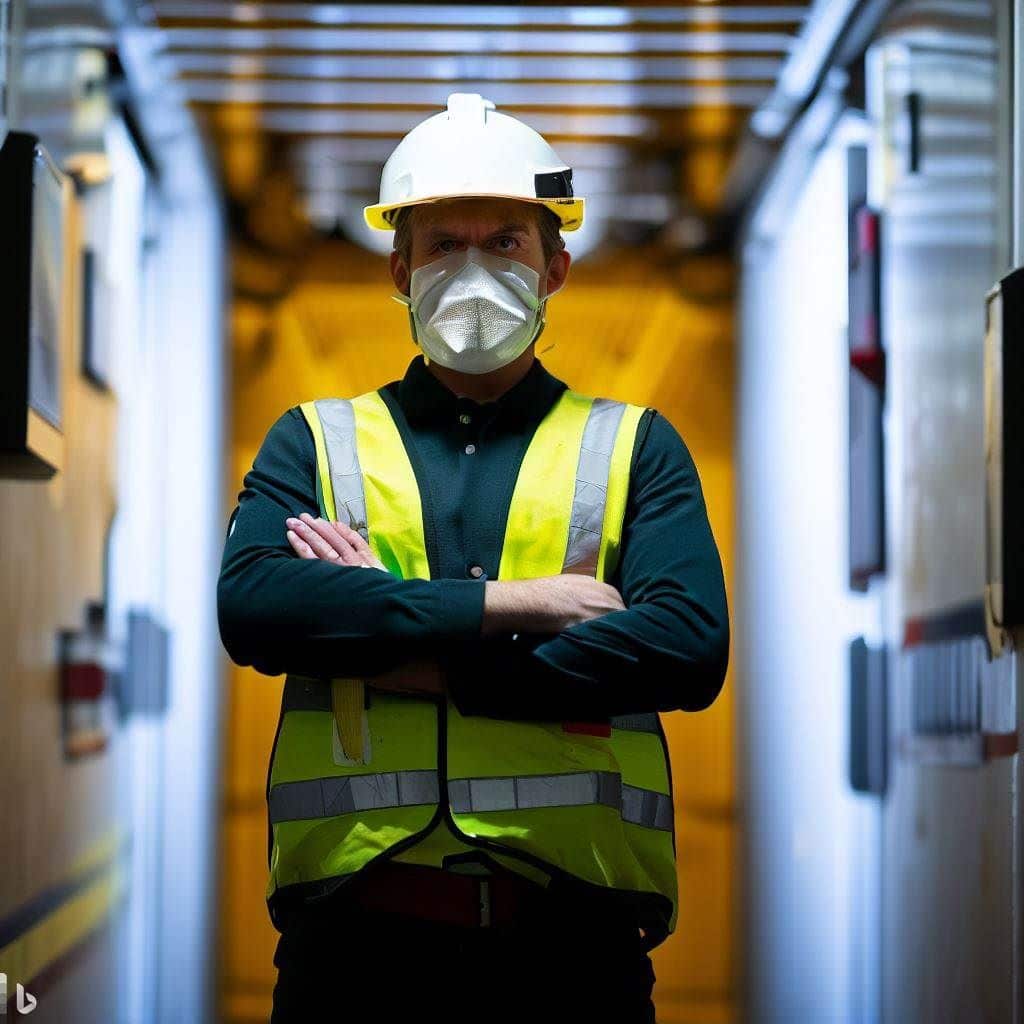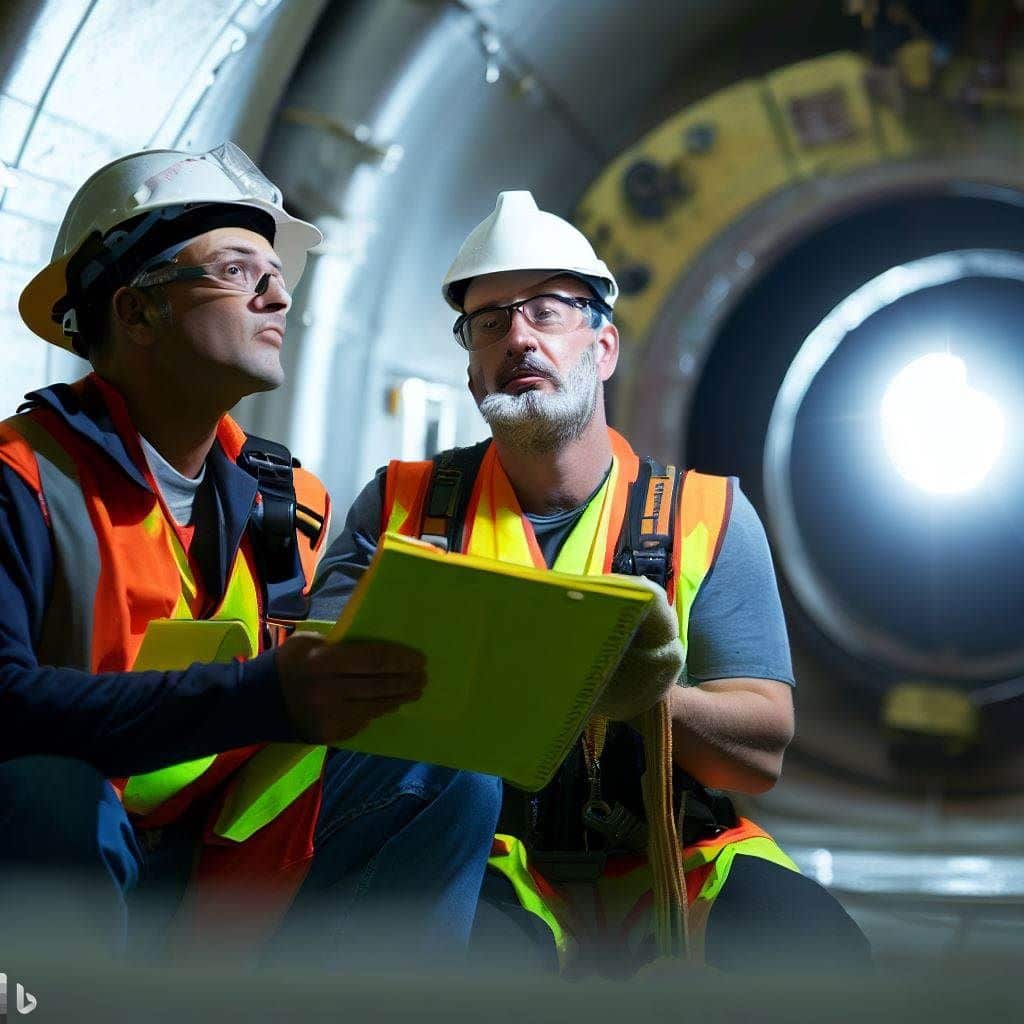Mastering the Role of an Entry Supervisor in Confined Space Operations: Key Responsibilities and Best Practices
Confined space operations are specialized tasks that involve working in enclosed or partially enclosed spaces not designed for continuous human occupancy. These spaces may have limited access or egress, hazardous atmospheres, or other risks that make them dangerous for workers. Examples of confined spaces include storage tanks, silos, pipelines, tunnels, and ship compartments.
Due to the inherent dangers associated with confined space operations, it is crucial to have a well-trained and skilled team to execute these tasks safely and effectively. One of the key roles in these operations is the entry supervisor. This article will delve into the responsibilities and best practices of an entry supervisor in confined space operations and provide insights into the skills required for this crucial role.
Defining the role of an Entry supervisor
The entry supervisor is critical in confined space operations, overseeing the entire process and ensuring the safety of all personnel involved. The entry supervisor is the person who manages and authorizes entry into confined spaces, ensuring that all necessary safety procedures and precautions are followed.
This role requires a strong understanding of confined space hazards, regulations, and safety protocols and excellent communication and leadership skills. The entry supervisor must coordinate and communicate effectively with other team members, such as the entrants (workers entering the confined space), the attendants (personnel stationed outside the confined space to monitor and assist as needed), and the rescue team.

Key responsibilities of an entry supervisor in confined space operations
Pre-entry planning and preparation
The entry supervisor is responsible for thoroughly planning and preparing confined space operations. This includes assessing potential hazards, developing a written permit, and ensuring all necessary safety equipment and resources are available. The entry supervisor must also ensure that all personnel involved in the operation have received adequate training and are familiar with the specific confined space hazards and safety procedures.
Permit management and authorization
As the person responsible for authorizing entry into confined spaces, the entry supervisor must review and approve the written permit before any work can commence. This involves verifying all pre-entry requirements, including atmospheric testing, ventilation, and appropriate personal protective equipment (PPE), have been met. The entry supervisor must also ensure that the permit is displayed prominently at the entry point for reference by all team members.
Monitoring and supervision
During the confined space operation, the entry supervisor must remain vigilant and monitor the progress of the work and the status of the entrants and attendants. This includes staying in constant communication with the team, ensuring that all safety protocols are followed, and making adjustments to the plan as necessary. The entry supervisor must also be prepared to terminate the operation if conditions become unsafe or any team member shows signs of distress.
Essential skills for a compelling entry supervisor
Technical knowledge and expertise
An entry supervisor must comprehensively understand confined space hazards, regulations, and safety protocols. This includes knowledge of applicable industry standards, such as OSHA regulations, and familiarity with the specific hazards and risks associated with the confined spaces they will oversee.
Leadership and decision-making
The entry supervisor must be a strong leader, capable of making decisions under pressure and providing clear direction to the team. This includes assessing and managing risks effectively and prioritizing the safety of all team members above all else.
Communication and interpersonal skills
Effective communication is a critical skill for an entry supervisor, as they must ensure that all team members know the hazards, safety procedures, and their roles in the operation. The entry supervisor must also be able to listen to and address concerns raised by the team, fostering an environment of trust and open communication.
Best practices for entry supervisors in confined space operations
Regularly review and update safety procedures
An entry supervisor should continually review and update their knowledge of confined space safety procedures, ensuring they know the latest best practices and industry standards. This includes staying current on new technologies and equipment that may improve safety and efficiency in confined space operations.
Maintain clear and open communication.
An entry supervisor should foster a culture of open communication within the team, encouraging all members to voice their concerns and ask questions. By maintaining clear and open lines of communication, the entry supervisor can ensure that everyone is on the same page and working together to achieve a safe and successful operation.
Actively engage in training and professional development
Engaging in ongoing training and professional development opportunities is essential to maintain and improve their skills as entry supervisors. This may include attending industry conferences, workshops, and courses and seeking out mentorship and networking opportunities with other professionals in the field.
Ensuring safety and compliance in confined space operations
Security and compliance are paramount in confined space operations, and the entry supervisor plays a crucial role in ensuring that all team members adhere to the necessary safety protocols and regulations. To achieve this, the entry supervisor must:
- Develop and implement comprehensive safety procedures, including a written permit system, hazard assessment, and emergency response plan.
- Ensure that all team members receive appropriate training and are familiar with the specific hazards and safety protocols associated with the confined space they will be working in.
- Regularly review and update safety procedures, staying current on industry best practices and standards.
- Maintain open communication with the team, addressing concerns and ensuring all members know their roles and responsibilities.
Communication and coordination with confined space team members
The entry supervisor must maintain constant communication and coordination with all team members involved in the confined space operation. This includes the entrants, attendants, rescue team, and any other personnel who may be involved in supporting the operation.
Effective communication is essential for ensuring that all team members know the hazards, safety procedures, and their roles in the operation. The entry supervisor should establish clear lines of communication and encourage open dialogue, fostering an environment of trust and collaboration.
Coordination is also crucial, as the entry supervisor must ensure that all team members work together efficiently and effectively. This may involve scheduling and assigning tasks, managing resources, and making adjustments to the plan as necessary.
Handling emergencies and rescue operations as an entry supervisor
In an emergency during a confined space operation, the entry supervisor plays a critical role in coordinating the rescue efforts and ensuring the safety of all team members. This includes:
- Initiating the emergency response plan and notifying the appropriate personnel, such as the rescue team, first responders, and emergency medical services.
- It communicates with the entrants and attendants, providing clear instructions and updates on the situation.
- If necessary, they coordinate the evacuation of the confined space and ensure that all team members are accounted for.
- We are assessing the situation and making decisions on how to proceed, prioritizing the safety of all team members above all else.

Training and certification for entry supervisors in confined space operations
Completing the appropriate training and certification programs is essential to become an entry supervisor in confined space operations. These courses typically cover hazard identification, permit systems, safety procedures, and emergency response planning.
In addition to formal training programs, entry supervisors need to gain hands-on experience in confined space operations, working under the guidance of experienced professionals. This practical experience will allow entry supervisors to develop their skills and knowledge, preparing them for their challenges.
Conclusion and future outlook for entry supervisors in confined space operations
The role of an entry supervisor in confined space operations is challenging and rewarding, requiring a solid understanding of confined space hazards, safety protocols, and practical leadership skills. By mastering these skills and following best practices, entry supervisors can play a vital role in ensuring the safety and success of confined space operations.
As technology advances and new methods and equipment are developed for confined space operations, the role of the entry supervisor will continue to evolve. Entry supervisors must stay current on industry trends and engage in ongoing professional development to ensure effectiveness in this dynamic field.
Frequently Asked Questions:
Q: What is the primary responsibility of an entry supervisor in confined space operations?
A: The primary responsibility of an entry supervisor is to oversee the entire confined space operation, ensuring the safety of all personnel involved. This includes planning, authorizing entry, monitoring the work, and coordinating with team members.
Q: What kind of training is required to become an entry supervisor?
A: Entry supervisors must complete appropriate training and certification programs that cover topics such as hazard identification, permit systems, safety procedures, and emergency response planning. Additionally, hands-on experience in confined space operations is crucial for developing skills and knowledge.
Q: How does an entry supervisor ensure safety and compliance in confined space operations?
A: An entry supervisor ensures safety and compliance by developing and implementing comprehensive safety procedures, ensuring all team members receive appropriate training, regularly reviewing and updating safety procedures, and maintaining open communication with the team.
